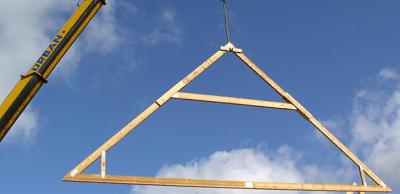Sealing end laps in metal roofing
The Metal Cladding and Roofing Manufacturers Association (MCRMA) has produced guidance on effective sealing of end laps in metal roofing constructions. This comes following a study of built up and composite roofing profiles that are most commonly used in the UK.
Getting it wrong at the construction stage will cause a building to fail, resulting in expensive remedial work, but the MCRMA guidance can help you get it right. It covers profiled metal to metal; profiled metal to GRP rooflights; sandwich panel to panel and sandwich panel to factory-assembled GRP rooflights.
Key considerations with metal roofing
- Too few or poorly positioned fixings will result in too little pressure being applied to the sealant, and quite often a visible bowing on wider profiles.
- Crown fixing has been shown to have poor performance and where possible, shouldn’t be used at end lap detail.
- The closer the sealant is positioned to the fixing, the better the compression and the better the end lap is sealed.
- The sealant should be positioned far enough back from the leading edge of the lap to stop extrusion from the joint when it’s compressed.
- Where a seal is needed at the bottom of the lap to keep out dirt and trapped water, the MCRMA suggests you use a bead of premium quality neutral cure silicone sealant positioned approximately 15mm from the bottom of the lap.
- Manufacturers are the best people to offer advice about their products; any variation from their published data could mean that the component or system fails prematurely.
- If you're unsure about the use or application of a product or system refer to the manufacturer for detailed written advice.
Download Effective Sealing of End Lap Details In Metal Roofing Constructions to get more information.
Please Note: Every care was taken to ensure the information was correct at the time of publication. Any written guidance provided does not replace the user’s professional judgement. It is the responsibility of the dutyholder or person carrying out the work to ensure compliance with relevant building regulations or applicable technical standards.
This article was updated on 24 November 2022
Sign up to the building bulletin newsletter
Over 48,000 construction professionals have already signed up for the LABC Building Bulletin.
Join them and receive useful tips, practical technical information and industry news by email once every 6 weeks.
Subscribe to the Building Bulletin




Comments
Add new comment